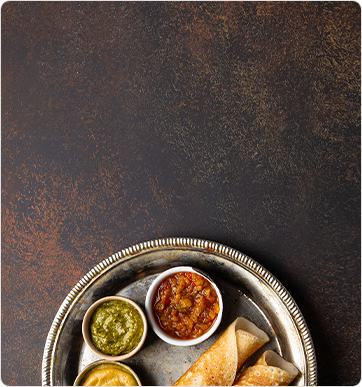Understanding Intermittent Fasting
Intermittent fasting, at its core, entails cycling between periods of eating and fasting. The primary aim is not just about what you eat but when you eat it. This unique eating pattern has been associated with numerous health benefits, including weight loss, improved metabolic health, and even potential longevity. Research suggests that intermittent fasting has displayed an impact on health indicators, such as greater insulin sensitivity, and lowered levels of blood pressure, insulin, glucose, inflammation, and body fat. While these benefits are compelling, it’s important to note that individual outcomes can vary based on factors such as lifestyle, diet, and overall health. To experience the benefits of IF, it is important to consume healthy nutrition food. Fibers are one of the important nutrients along with protein and good fats that you should include in your diet during intermittent fasting.
6 Types of Intermittent Fasting
12-Hour Intermittent Fasting
This method is considered an entry point for beginners. It involves a 12-hour fasting window, such as refraining from food from 7 pm to 7 am. This simplicity makes it an easy introduction to intermittent fasting, allowing the body to adapt gradually to fasting periods and potentially aiding in weight management.
16:8 Method
With a 16-hour fasting window followed by an 8-hour eating window, this approach has gained attention for its effectiveness in weight control. Individuals might choose to skip breakfast or dinner, depending on personal preferences, while consuming meals during the designated eating window.
5:2 Diet
This method alternates between regular eating days and calorie-restricted days (usually two days per week). On restricted days, individuals consume significantly fewer calories (around 500-600 calories) while eating normally on the other five days. It’s shown promise for weight loss and may improve insulin sensitivity.
Alternate Day Fasting
As the name implies, this method involves alternating between days of normal eating and days of fasting. On fasting days, individuals might consume minimal calories or completely abstain from food. While it’s shown benefits for weight loss, its more extreme nature might not be suitable for everyone.
Weekly 24-Hour Fast (Eat-Stop-Eat Diet)
This method involves fasting for 24 hours, once or twice a week. For instance, fasting from dinner one day to dinner the next day. It presents both challenges and potential benefits but requires cautious implementation, especially for beginners.
The Warrior Diet
Considered an extreme form of intermittent fasting, this method involves a 20-hour fasting window followed by a 4-hour eating window, typically consisting of one large meal. While claiming certain benefits, this approach can be challenging due to prolonged fasting periods and limited eating windows.
Tips for Maintaining Intermittent Fasting
- Hydration and Nutrient-Dense Foods: Staying adequately hydrated and opting for nutrient-dense food during eating windows are crucial. Incorporating lean proteins, and healthy fats can help maintain energy levels and support overall health during fasting periods. Try out some low-carb Indian food recipes that are high in protein and fiber to keep you going throughout the day.
- Distractions and Rest: Engaging in activities that divert attention from food-related thoughts can be helpful during fasting periods. Light exercises like yoga, meditation, or hobbies can assist in managing hunger and maintaining focus.
- Eat more fiber: Consuming foods that are high in fiber will keep you fuller for a longer period. Fibers are one of the important nutrients that have several health benefits including a healthy gut, weight loss, and decrease in blood pressure and blood glucose levels. Vegetables, legumes, seeds, nuts, and fruits are some of the high-fiber sources. You can also get your fiber from the many fiber supplements available in India.
FAQs About Intermittent Fasting
- How Does Intermittent Fasting Work for Beginners?
Starting with a 12-hour fasting method provides an easy introduction to intermittent fasting, allowing the body to adapt gradually.
- How much weight can you lose in a month with intermittent fasting?
While intermittent fasting has shown promise in aiding weight loss, actual outcomes can vary based on individual factors like diet, lifestyle, and adherence to the fasting regimen.
- Is it better to fast for 12 hours or 16 hours?
The effectiveness of different fasting durations is subjective and can vary among individuals. Experimentation and finding a sustainable approach are key.
- Does sleeping count as fasting?
Yes. Sleeping hours are included in the fasting on intermittent fasting.
- Can you exercise while fasting?
Yes. You will experience better effects by combining intermittent fasting with working out.
- What are some good sources of fiber to consume during intermittent fasting?
Several nutrient-dense foods contain fiber. Studies have proven that consuming fenugreek fiber has several benefits including weight loss, reduction in blood sugar levels, and many other benefits.
- Which fiber supplements to take on intermittent fasting?
There are many fiber supplements available in India. Fenuflakes is a supplement that has a near 1:1 ratio of soluble and insoluble fiber. It is ultra-low in carbs and contains more than 60% fiber, more than 25% fiber, and less than 2% fats.
Takeaway
So, remember, intermittent fasting focuses more on WHEN you eat than WHAT you eat.
Related Blogs
How should a diabetic read food labels?

Help feed
your hunger.


